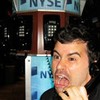
Advertisement
Advertisement
Advertisement
Advertisement

Advertisement
Advertisement

Advertisement
Advertisement
Advertisement
Advertisement

Advertisement
Advertisement
Advertisement
Advertisement

Advertisement
Advertisement

Advertisement
Advertisement

